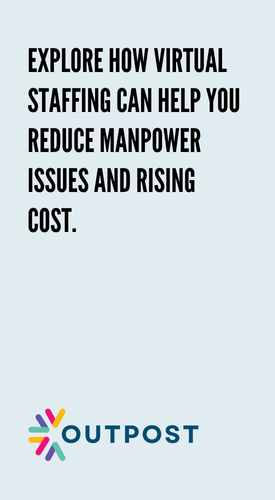Hiring a virtual secretary should make your life easier—not create more work.
But too often, business owners dive in without a clear plan. They hire someone fast, hand over a few messy tasks, and hope it works out. When it doesn’t, they blame the concept—not the process.
Truth is, a virtual secretary can give you back hours every week. But only if you avoid the common traps that lead to disappointment and missed expectations.
Here are the most frequent mistakes to watch out for—and how to set things up right from the start.
Mistake 1: Hiring Without Knowing What You Need
This is where most problems begin. You know you’re busy. You know you need help. But if you don’t know what you want help with, no assistant will fix that.
Before you even think about hiring, spend a few days tracking your work. Write down what you’re doing, how long it takes, and which of those tasks someone else could do with minimal guidance.
Look for things like:
- Answering or sorting emails
- Booking and rescheduling meetings
- Updating spreadsheets or CRMs
- Cleaning up Google Drive folders
- Sending invoices or chasing payments
Create a short list of repeatable, process-based tasks. That becomes your starter handover.
👉 Fix it by: Identifying 5–10 tasks that eat time but don’t require your voice or decision-making.
Mistake 2: Expecting Them to Read Your Mind
Hiring a virtual secretary doesn’t mean handing off chaos and expecting clarity.
If your task brief looks like: “Just handle my emails,” that’s not delegation—that’s dumping. And it sets both of you up to fail.
You don’t need to create a corporate SOP manual, but you do need to define what good looks like. If they’re managing your inbox, what types of messages should they reply to? What needs your review? How do you want follow-ups handled?
Recording a Loom video, writing a one-pager, or showing a past example can save you hours of back-and-forth later.
👉 Fix it by: Giving clear outcomes, examples, and decision rules for recurring tasks.
Mistake 3: Trying to Offload Everything on Day One
You’re overwhelmed. So it’s tempting to throw a huge list at your new hire and hope they “figure it out.”
But too much too soon usually leads to confusion and mistakes. Instead, start small—one or two high-leverage tasks at a time.
Let them master a few key jobs (like inbox triage or scheduling), build trust, then expand. That’s how long-term working rhythms get built.
Many teams using providers like Outpost start with just 5–10 hours a week. That’s enough to see results—without overwhelming the system.
👉 Fix it by: Starting with low-risk, repeatable tasks and gradually handing over more as confidence grows.
Mistake 4: Ignoring the Time Zone Factor
You don’t need your virtual secretary to be online when you are—but you do need to know when to expect updates or availability.
Some business owners assume they’ll get instant replies. Others don’t set expectations and end up wondering when tasks will be done.
If your assistant is in a different country (which is common for cost reasons), factor in the overlap. Do you need a response during your local morning? Should updates come by your end-of-day?
👉 Fix it by: Setting a shared rhythm. Daily updates by 4PM your time. One check-in meeting a week. That’s all it takes.
Mistake 5: Skipping a Trial Period
Jumping straight into long-term work without testing the waters is risky—especially if you’re hiring through freelance platforms or directly.
A trial task shows you how someone follows instructions, communicates, and solves problems.
Examples of good first tasks:
- Organising your inbox and creating labels
- Booking mock appointments with availability guidelines
- Drafting email templates for FAQs
- Creating a document from rough notes
- Updating CRM records from a list
Agencies like Outpost typically include a guided onboarding and test period, so you don’t need to figure this out alone. But if you’re hiring solo, build your own mini-trial before going all in.
👉 Fix it by: Assigning 1–2 paid test tasks that mimic real work—not just a skills test.

Mistake 6: Not Having Any System for Communication or Tracking
Hiring a virtual secretary isn’t just about finding the right person—it’s about creating the right structure.
If you’re managing tasks by memory, via random emails, and with no shared folder in place, you’ll spend more time explaining things than getting things done.
Set up a simple system:
- A shared task board (Trello, ClickUp, or Notion)
- A main communication thread (Slack, WhatsApp, or email)
- A shared folder with logins, templates, and sample docs
- Weekly check-ins or written updates
That’s all you need to keep things moving.
👉 Fix it by: Building a lightweight system before assigning anything complex.
Mistake 7: Not Giving Feedback Early
A lot of virtual secretary relationships fail—not because the person is bad, but because the expectations stay unclear.
If a task wasn’t done the way you expected, say so. If something went really well, say that too. Early feedback helps your assistant adjust quickly. Radio silence doesn’t help anyone.
Keep it short. Keep it regular. You don’t need to micromanage—but you do need to communicate.
👉 Fix it by: Scheduling a 10-minute review after the first few weeks. Ask: what’s working, what’s not, what needs adjusting?
Mistake 8: Looking for a Unicorn Instead of Building a System
You don’t need a perfect person. You need a clear process.
Don’t expect one person to be a copywriter, designer, sales assistant, and executive admin rolled into one. Start by finding someone who’s great at admin and building structure—then document what you need over time.
As your business grows, you can layer in support for other areas. But trying to hire one person who can do everything perfectly usually leads to disappointment.
👉 Fix it by: Hiring for role clarity, not versatility. You can always scale the system—but only if the foundation is stable.
Conclusion

Hiring a virtual secretary can completely transform your workweek—but only if you set it up right. So, define the role before you fill it. Test the relationship before you scale it. And build systems that let your support work without constant supervision.
Most importantly, remember: this isn’t just about getting help—it’s about building a working rhythm that frees you to focus on the business, not the busywork.




